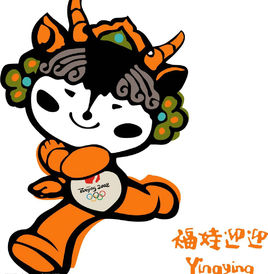Tibetan antelopes wandering on Plateau, as Olympic mascots celebrate birthday
Xinhua,November 13, 2017 Adjust font size:

Yingying, a member of the mascots for the Beijing Olympic Games.
Being a member of the mascots for the Beijing Olympic Games, Yingying, with Tibetan antelope as the model, has been enjoying her idyllic life on the Qinghai-Tibetan Plateau as the five mascots are celebrating their 12th birthday on Saturday.
Under the protection of the Chinese government and the people, the species population of Tibetan antelope, unique to the Plateau, has been increasing steadily during the past decades, official statistics said.
Yingying, a symbol for Green Olympics, was unveiled together with other four mascots of Beibei, Jingjing, Huanhuan and Nini, on Nov. 11, 2005, namely 1,000 days prior to the grand opening of the 29th Summer Olympic Games in Beijing.
During the 1990s, a great number of Tibetan antelopes were poached, resulting in the establishment of the first nature reserve for antelopes in 1997, namely the Hoh Xil National Nature Reserve, which breeds up over 60,000 Tibetan antelopes nowadays.
Due to a series of protective measures, the population of the Tibetan antelopes has reached 200,000 on the Plateau, according to the statistics.
In 2015, the Tibetan antelope was even excluded from the"Red List of China's Biodiversity", jointly issued by the Chinese Ministry of Environmental Protection and the Chinese Academy of Sciences.
On July 7, 2017, Hoh Xil became a world heritage site, the only one on the Plateau, during the 41st session of the UNESCO World Heritage Committee in Krakow, Poland.